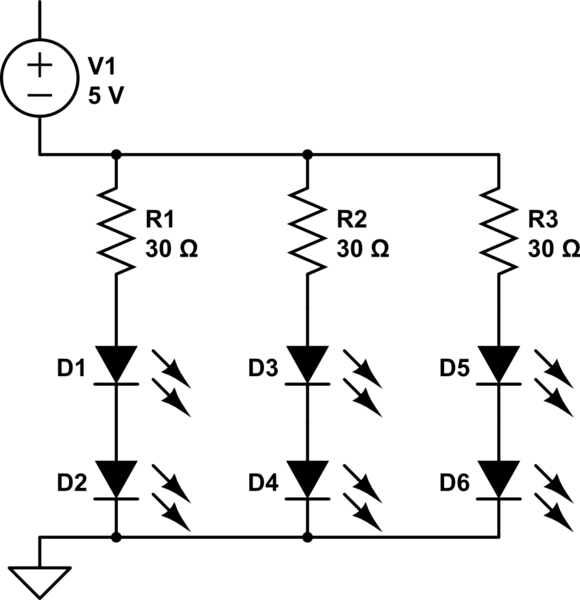As others have pointed out, you should not try and draw 60 mA from a GPIO.
You could try and do it with a resistor that will limit the current to ~20-25 mA -- although the normal recommended maximum is 16mA, they are probably capable of nearly double that. But this is still your judgement call, and the total number of GPIOs used that way is open to question (I've done four, totalling 80-100 mA). However, if they are really intended for 60 mA, chances are this is going to very significantly reduce their brightness.
If you wanted to test this, then you could try:
(3.3 - 1.6) V / 0.02 A = 85 Ohms
This is the supply voltage minus the forward voltage drop of the LED divided by the maximum current in amps.
Making that 100 Ohms will mean the current is 0.017 A; this probably won't be much difference.
For contrast, you can connect one directly to a 3.3V pin in series with a 25-30 Ohm resistor, which should give you ~60 mA, or a 5V pin with a ~55 Ohm resistor.
(5 - 1.6) V / 0.06 A = 56.666 Ohms
However, chances are you want to connect more than two LEDs; assuming using the GPIOs are no good period, then you have a problem: You cannot control the 3.3V or 5V rail pins directly. They are on while the pi is plugged in.
If that is still okay, then you must connect the LEDs in parallel, because the forward voltage drop of the LEDs is additive in series. So likely you could hook two of them in series to 5V:
(5 - 1.6 * 2) / 0.06 = 30 Ohms
Of course, this still only gives you two LEDs. However, you can get a lot more than that by connecting them in parallel. You can actually combine the methodologies:

simulate this circuit – Schematic created using CircuitLab
So this is 6 LEDs in three parallel banks of two; each bank consists of a 30 Ohm resistor and two LEDs. Doing them this way instead of one LED per bank (which is the most you could get on a 3.3V pin) means that you are consuming less current, because each bank still only draws 60 mA. Presuming you have a 2A supply to the Pi, you should be safe running at least 10 of those from the 5V rail, which is probably more you need.
On new models of pi, the 3.3V rail should be good for this as well -- but I am not positive this actually includes the Zero, and in any case, because of the potential of using 2 LEDs in series, 5V is a better choice here.
This still leaves you with the issue of the LEDs being on all the time, although the total power consumption is probably < 1 W since each of those banks uses:
(5 - 3.2) V * 0.06 A = 0.1 watts
Note that you could control each bank individually, but in this case it sounds like that is not necessary, so you would instead control the whole thing using a single transistor. However, you might want to consider the use of a ULN2xxx type integrated circuit; these are at most only a few bucks a piece (although you probably have to buy 5 or 10) and allow you the option of controlling each bank.
They control via the ground, i.e., in the above circuit the second resistor of each bank would be connected to an a pin on the ULN's output side, and the 5V supply would be routed through it. The pins on the other side of the DIP are connected directly to GPIOs on the pi to turn each bank on or off.
I've run arrays of smaller LEDs using a ULN2803APG from the 3.3V rail this way before.

